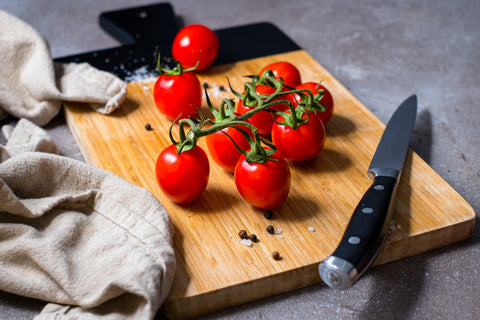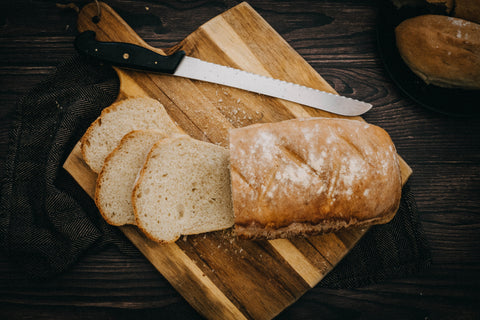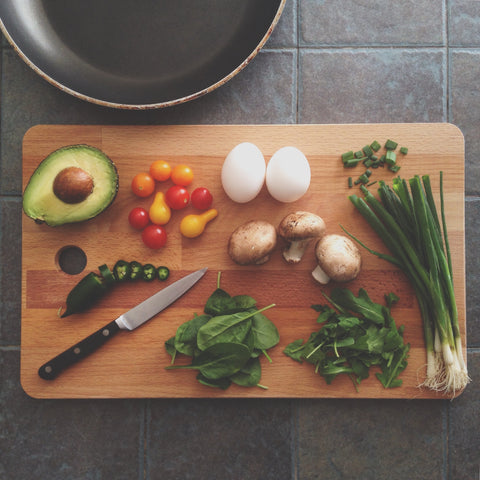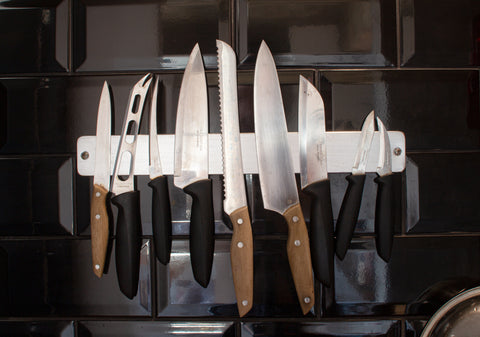What is something you will find in every single kitchen in the world? Knives. Knives are one of the most important tools required for a properly functioning kitchen. There are different types of knives required for different purposes, and they often come in sets. One particular knife that always comes along in these kits is the Kitchen Utility Knife. However, it is often overlooked and not used to its best efficiency.

Photo by Dimitri Dim / Pexels
Smaller than the classical knife, the kitchen utility knife has scalloped or serrated edges useful for cutting smaller foods and slicing vegetables. Its small size allows for more precise cutting of smaller food items. Its sharp edges also make it convenient to slice cheeses and meat. They are typically made from stainless steel and are light to use easily. They range between 4 to 8 inches.
Let us take a quick look at its many features and uses before you can convince yourself to buy one of these yourself.
What can a utility knife be used for?
Chopping Fruits and Vegetables :
Many knives can be used to cut these, but the utility knife, in particular, is helpful because of its smaller size and straight blade. It is the perfect blade for cutting fruits with softer skin like tomatoes and oranges without making a mess. It is also suitable for ones with harder skin, like apples and cucumbers. Thus, it is an ideal blade to have around in the kitchen.
Interestingly, the blades of these knives are also narrow enough to peel fruits.
Cutting Cheese and Slicing Meat :
When used in a sawing motion, the straight or serrated blade guarantees clean cuts on meats and cheese. It cuts even tough meat into smooth pieces with comparatively less mess.
What Are The Types Of Utility Knives?
There are three types of utility knives, including the non-kitchen utility knife.
- Standard Utility Knife:
This is the fundamental type of utility knife used in the kitchen. It has a slightly curved blade that helps chop fruits and veggies. Built small and slim, they help slice through food items efficiently. In addition, the way they are made makes them less prone to creating a sticky mess.
- Serrated utility knife:
As the name suggests, the blades of these knives are serrated, meaning they have jagged edges. These work best with sawing motions and are helpful while cutting and slicing meat and bones.

It works particularly well while slicing sandwiches that it has even earned the name “Sandwich Knife.” This is because they have the perfect size for it.
- Non-kitchen Utility Knife:
Some utility knives aren’t meant for the kitchen. Instead, they are made for other household purposes, such as cutting cardboard boxes, foam, paper, etc. They are also used to cut certain wires and strip cables. These are definitely not made for the kitchen but are just as valuable.
Why Should You Own A Kitchen Utility Knife?
Owning multiple knives may cost you a fortune and can make you cram for space. The genuinely versatile utility knife can be a single replacement for all the others, so why not just go ahead and add them to your kitchen arsenal! We’ve listed a few pointers. Take a look at them to know why the utility knife is a must-have in your kitchen.
- Minimalism:
Leading a minimalist lifestyle means using adaptable things that serve many purposes and reducing clutter and unnecessary items from your space. A utility knife helps you to just own one knife instead of many knives in your kitchen.
- Multi-purpose:
The utility knife serves various purposes like cutting fruits and vegetables, slicing cheese and meat, chopping small greens and nuts, and even peeling fruits. It is clearly a versatile tool that makes an excellent addition to the kitchen.

Photo by Katie Smith / Unsplash
- Mobility:
Created smaller than other knives but serving multiple functions, the utility knife is compact and portable too! It is easier to carry it around instead of a complete knife set while you are out camping or on a picnic.
- Sharp Quality:
Their thin blades are built with extreme sharpness, sharp enough to cut through food items with hard peels such as apples with ease. It is easy to penetrate any sort of food item with these knives.
- “Middle” Knife :
Utility knives are not too big or too small. They work well when other knives are not satisfactory enough. They are larger than knives that may be too small and smaller than knives that may be too big. They present the perfect “middle” ground.
OTHER USES
The utility knife already seems to do so much, but it is also perfect for other jobs like opening shellfish. It is also adequate for quick, small jobs such as chopping nuts and cutting up greens and herbs. The kitchen utility knife is also used to slice loaves of bread and buns, especially for sandwiches, as it helps keep the filling inside without spilling out.
Difference Between Other Kitchen Knives And Utility Knives
Most other knives in the kitchen are made for broader, specific purposes, whereas utility knives are made for smaller food items and intricate jobs. For example, a chef knife is used for chopping huge cuts of meat and poultry, whereas utility knives are used to make thin, small cuts of meat or poultry. Utility knives also serve multiple purposes, unlike kitchen knives.

Photo by Danilo Rios / Unsplash
How to care for a utility knife?
Caring for a utility knife is similar to caring for a plain one. All the basic rules apply. Avoid putting it to wash in the sink with all the other vessels. Wash it separately and store it separately. This is both for safety purposes and to maintain the quality of knives for a long time.
Hand wash all your knives and wipe down on both blades with a clean cloth. Keep away from moisture so that edges don’t rust.
How do you sharpen a utility knife’s blade?
Do you feel like your knife is not cutting as well as before? It has probably become blunt due to long usage, which is a common thing. It happens to all knives. To slow this process down, make sure you always cut on a good quality cutting board and not on any surface. Proper usage and care are also crucial.
Regardless, your knife will tend to become blunt over time. The most common sharpening option is using a handheld metal rod called “steel.” Slide it up and down the blade in a straight motion. This sharpens any blunt or curved edges of the blade.
There is also the option of using the rock called whetstone. You just have to move the blade up and down against the abrasive surface of the stone.
Perfecting your art of sharpening a knife properly comes with practice and time.
These are the main types and uses of a kitchen utility knife. Like anything else, it will come in handy if used right. Caring and sharpening the knife is a piece of cake – it is no rocket science.
So, get yourself a utility knife for your kitchen to make your cooking experience enjoyable. Thank me later!

